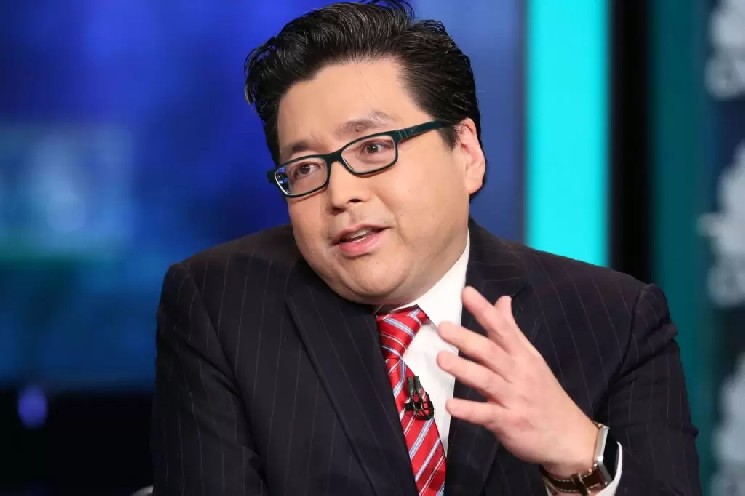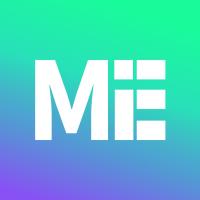Original Author: JJ Alicea
Original Compilation: Block unicorn

From a historical perspective, s have always been a part of the human experience, representing the migration of cultural artifacts across generations - ideas that persist, are significant, and snowball across eras. s are the focal point of society, carrying value in the form of collective influence.
Today, s are often associated with triviality or even absurdity, largely because internet s tend to be humorous in nature. However, the very reason humor resonates is that it contains a kernel of truth.
"s propagate themselves in the pool by leaping from brain to brain via a process which, in the broad sense, can be called imitation. As genes propagate themselves in the gene pool by leaping from body to body via sperms or eggs, so s propagate themselves in the pool by leaping from brain to brain." - Richard Dawkins
s are the basic units of cultural transmission. In ancient societies, religious stories and shared histories were often orally passed from person to person, with each storyteller adding their own perspective or embellishment. This process helped solidify community beliefs and values, embedding them deeply into the cultural fabric. Similarly, in modern society, s are the means of transmitting cultural fragments or ideas from one mind to another, evolving through each retelling or reinterpretation. Both modes of transmission rely on repetition, resonance, and the subtle shifts that occur as people interpret and share, allowing the essence of ideas to persist and adapt over time. In this way, s are the modern narrative tools, distilling complex notions into simple, easily transmissible forms, conveying cultural information and rapidly disseminating it globally.
Communities
s are the basic units of cultural transmission, and communities are the ecosystems in which s accrue value. In other words, s are the important ideas, and communities are the people those ideas are focused on.
Communities typically exhibit the following key characteristics:
1. Shared interests and goals
2. Communication and interaction
3. Structure and identity
4. Knowledge and resource sharing
5. Collective identity
Communities often originate from a small number of individuals dedicated to disrupting mainstream culture. The open-source software movement started with a handful of developers, like those driving the Linux project, challenging the dominance of proprietary software and advocating for free access and modifiable code. The punk rock movement began in cities like New York and London, driven by a small group of passionate musicians, artists, and fans who rejected the polished sound of mainstream rock and the consumerism of pop culture. The VaccinateCA organization is composed of tech-optimistic individuals committed to spreading vaccine supply information to as many people as possible, in the face of a logistically constrained government system.
These communities were initially highly localized, with only a small number of devoted adherents sharing a common vision and collective belief in the malleability of the world. These communities ultimately had profound impacts on domains like technology, finance, culture, art, entertainment, and healthcare.
The Linux operating system saves enterprises and governments over $60 billion annually in licensing fees, supporting over 90% of the internet infrastructure, with the Linux kernel also powering about 70% of the world's smartphones through Android. Punk rock became the soundtrack for political and social uprisings in Eastern Europe (e.g., the Solidarity movement in Poland) and Latin America. Punk fans and bands popularized zines, self-published mini-magazines often focused on music, politics, and alternative lifestyles - the grassroots precursors to modern blogs and independent digital journalism. VaccinateCA provided reliable vaccine supply information for over 1,000 vaccination sites, compared to only 127 options from Google - significantly improving vaccine distribution efficiency.
This is bottom-up, community-driven value creation.
s
The first use of gold can be traced back to ancient civilizations in Mesopotamia, Egypt, and parts of Eastern Europe. As early as 4000 BC, people valued gold for its unique beauty, rarity, and malleability, crafting it into jewelry, ritual objects, and status symbols. Copper, silver, and bronze were also widely used for making tools and decorative items during this time. But what made gold so special?
Unlike other metals, gold does not tarnish or lose its luster, giving it a lasting quality that symbolizes eternity and stability. The longevity of gold means it resists change, obsolescence, and competition, giving it a high chance of continued existence in the future. Gold has become a with enduring influence because it is important, unique, and resonates with humanity.
Gold is one of the largest asset classes in the world, yet it has no practical utility - no production use, no cash flow, and no business model. Its value exists solely because we collectively ascribe it value. It is a metal with limited intrinsic utility, but its perceived value stems from its beauty, rarity, and its symbolic meaning in human culture. It is not a useful commodity like oil, nor is it a representation of ownership like Apple stock. Yet, as gold's collective influence grows, more people adopt it, making it a store of value and potentially a global reserve currency, perhaps even replacing another - the US dollar.
One could argue that is the earliest "Meme coin" in the digital sense - an asset that initially seemed worthless, but has now become a global store of value across economic spheres.
not only sparked a financial revolution, but also ignited a cultural movement. Through decentralized technology, it enabled peer-to-peer value exchange, financial self-sovereignty, and the rise of a global grassroots community bound by shared beliefs.
's birth coincided with the 2008 financial crisis, a pivotal moment that tapped into widespread distrust of the traditional financial system and created a new narrative of decentralized value. People buy not for its potential cash flows, but for its unique value proposition: it is a store of value, a belief in future appreciation, and most importantly, a symbol of a new financial ecosystem free from corporate or individual control. It is a trustless asset that can underpin a trustless economy.
holders feel they are part of a larger community - a tribe, not just financial investors. If you're skeptical, search for "Apple tattoo" or "Uber tattoo" and compare them to "Bitcoin tattoo".
Assessing Community Value
Outsiders often overlook the power and value of communities, much like they initially misunderstood . In the traditional financial world, professionals typically rely on analysis methods taught at schools like the Wharton School - discounted cash flows, comparative analysis, cash flows, and EBITDA. Companies have thus shaped their own metrics and reporting around these frameworks. This limited perspective is why many initially misunderstood the value of GameStop, and why crypto assets like and coins are still misunderstood by traditional finance.
Today, the communities created by these "companies" have immense value. "Companies" here can refer to anything - startups, public companies, crypto protocols, KOLs, creative endeavors, even a subreddit. Over time, the valuation of a company depends not just on its profits, but on the value its community creates and accrues - whether internal or external (e.g., Reddit + GameStop).
Over 86% of internet users trust Reddit and its community more than advertising when it comes to understanding new products and brands; people under 45 trust news on social media platforms more than traditional news networks; 63% of Gen Z and Millennials trust influencers more than brands. Gen Z members spend an average of 8.5 hours online per day, 55% use smartphones for more than 5 hours a day, and Americans send an average of 94 text messages per day.
TikTok's book community has directly driven bestsellers, with some books seeing over 1,000% sales growth after gaining community recognition. The r/WallStreetBets community on Reddit was able to push GameStop's stock price from under $20 to over $300 in just a few days. After a collaboration, Bud Light's sales declined by 26% and Anheuser-Busch InBev's stock price fell by 20%, resulting in a $26 billion market value loss - all caused by its conservative community.
Communities cannot be accurately predicted by traditional financial evaluation frameworks, as their significance and impact are dynamic, often growing, shrinking, and transforming. They cannot simply be captured in the tables and lists of investment prospectuses or financial models.
Financial firms often overlook the enduring power of communities, viewing them as anomalies and underestimating their influence, dismissing them as futile behavior.
We believe that as the speed of interconnectivity and ongoing online interaction increases, communities will continue to grow and exert greater influence. The ubiquity of digital platforms makes it easier for individuals to find and connect with like-minded groups than ever before, breaking down the geographic and social barriers that once constrained community formation.
MEME Coins: Vessels of Community Ownership
MEME coins are the perfect tools for measuring community value. They are the tokenized expressions of culture.
Similar to social networks, the value of MEME coins stems from the communities they aggregate. However, they represent a fundamental shift in how value is distributed and controlled. Unlike platforms like Instagram or Facebook, where the value generated by user activity (content creation, interaction, and data) is primarily captured by the platform and its shareholders, MEME coins disrupt this model, making users both the creators and the owners of the network's value.
Bonk, distributed through an airdrop to users, quickly became the preferred MEME coin of Solana. The initial recipients were those who continued to contribute to the existing communities, protocols, and core infrastructure even after the FTX collapse. Bonk became a tokenized symbol of resilience in the face of adversity, and the enthusiasm of the initial recipients rapidly spread to a wider user base, driving up the value of Bonk and creating wealth within the ecosystem. This wealth remained within the community, supporting the development of projects like Bonkbot, bringing immense value to Solana, its product users, and the Bonk token itself.
This is grassroots value creation - bottom-up, community-driven, without external investors, only the human capital within the community creating value for the community.
As the world's assets become further digitized, more MEME can be monetized, manufactured, and self-generated - extending the concept of 'MEME' to any socially meaningful thing and transforming it into a tool for community monetization through immutable smart contracts.
The Future
The future will resemble the past, with technology continuing to evolve, cities expanding, and culture adapting to the tools and media of the age. However, machines cannot usurp the right to produce MEME. Culture - including its creation, dissemination, and endurance - cannot be outsourced to large-scale floating-point matrix operations. While machines may be able to generate products that appear to be MEME, they will be hollow, algorithmically optimized snapshots of familiar ideas, mass-produced for momentary attention - lacking the deeper resonance and transformative power of true MEME.
Throughout history, culture has always been the collective effort, and MEME are the smallest units of cultural transmission, encoding the ideas and values of their time. MEME are not just fragmented media; they are vessels of shared meaning. The vitality of MEME comes from being accepted, not created. Their birth is not isolated creation, but a chemical reaction of shared understanding, humor, and emotion.
On Loisaida Avenue in Manhattan, there is a small Puerto Rican restaurant called Rinconcito. They have no reservations, no rewards programs, no loyalty cards, and they won't ask for your email address to send targeted ads. You won't see them compromising their principles to cater to some outrageous trends on TikTok, nor will they bottle and sell their signature sauce to the masses.
They trade in culture, honest people cooking good food at fair prices - the same way for decades. In every community, this resonates deeply, as people recognize: this is how life should be. And that is their secret recipe - culture, for sale.






